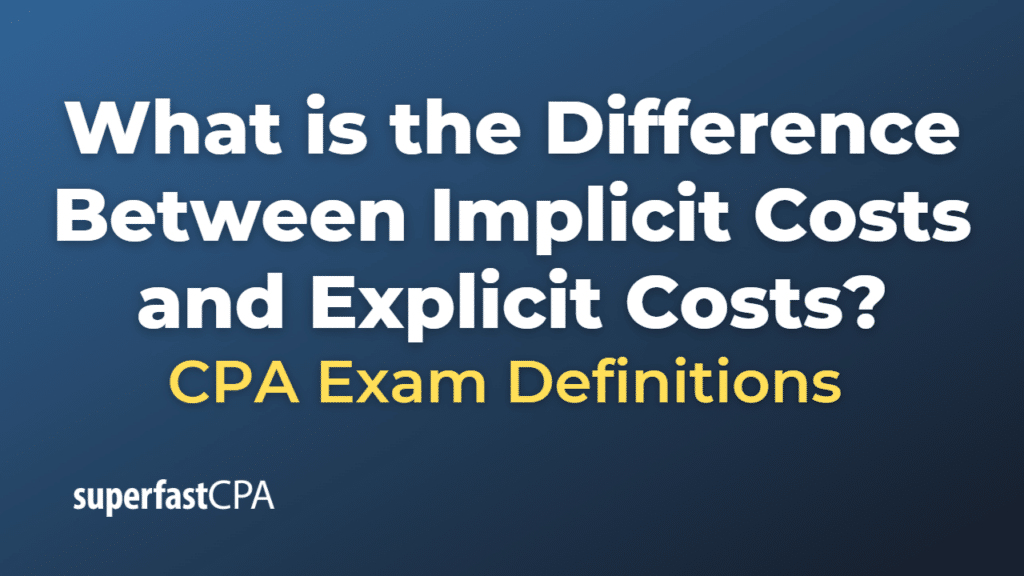Difference Between Implicit Costs and Explicit Costs
Implicit costs and explicit costs are two types of costs that businesses consider when calculating their total costs or making decisions. Here’s the difference between the two:
- Explicit Costs: These are direct, out-of-pocket expenses for a firm. They involve direct payment of money towards goods and services. For example, wages paid to employees, rent, utilities, raw materials, etc., are explicit costs. These costs are usually recorded in the books of accounts and appear on the financial statements.
- Implicit Costs: These are also known as opportunity costs or imputed costs. They represent the potential benefits an individual, investor, or business misses out on when choosing one alternative over another. They do not require a cash outlay and, as such, they don’t appear on financial statements. For example, an entrepreneur’s time and effort to start and manage a business could be seen as an implicit cost because the entrepreneur could have used that time for a salaried job or another venture.
So, the difference between explicit and implicit costs largely lies in their tangibility and whether they are recorded in the business’ books. Explicit costs are tangible and accounted for in the company’s financials, while implicit costs are intangible, unrecorded costs representing forgone opportunities.
In economic theory, both implicit and explicit costs are considered when calculating the economic profit of a business. Economic profit is total revenue minus total costs (including both explicit and implicit costs), whereas accounting profit only subtracts explicit costs from total revenue.
Example of the Difference Between Implicit Costs and Explicit Costs
Let’s say you own a bakery.
Explicit Costs: These are the costs that you directly pay out to run your bakery. They can include:
- Ingredients cost: $500 per month
- Bakery rent: $1000 per month
- Utility bills (electricity, water, etc.): $200 per month
- Wages for employees: $2000 per month
These explicit costs total to: $500 + $1000 + $200 + $2000 = $3700 per month
These costs are direct, out-of-pocket expenses that you can clearly identify and measure in dollar terms.
Implicit Costs: Now, let’s consider you could have worked as a chef at a restaurant earning $2500 per month instead of running your bakery. This foregone salary is an implicit cost because it’s an opportunity cost you incur by choosing to run your own bakery instead of working as a chef.
So, your implicit cost here is: $2500 per month
Unlike explicit costs, implicit costs don’t require a cash outlay, but represent the income or benefit you’re giving up by choosing one option over an alternative.
If you were calculating your bakery’s economic profit, you would take into account both explicit and implicit costs. On the other hand, if you were calculating the accounting profit, you would consider only the explicit costs.













